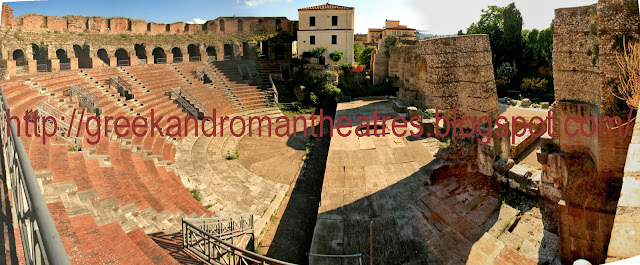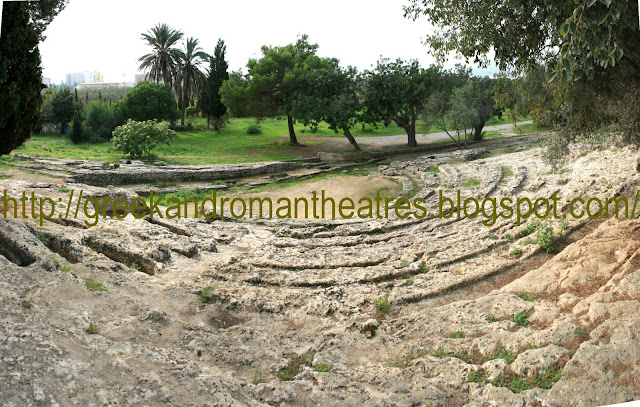BENVENTUM (Benevento), ancient Regio II –Apulia and Calabria-, modern Italy.
COORDINATES: 41º07’50.50” // 14º46’18.72” E
TIPOLOGY : Roman theatre. Urban.
DATE: II A.D. (126 A .D.)
TRANSFORMATIONS: In XX century the auditorium has been restored.
CAPACITY: 10.000 spectators (in ancient times).
CAVEA: Facing north-west. 90 m .diameter. Maenianum: Ima cavea: 15 rows of seats in 6 cunei; Media cavea had 11 rows; Summa cavea probably had 8 rows of seats.
ORCHESTRA: 26 m . diameter, including subsellia and passage.
STAGE BUILDING: Pulpitum had 44 x 9,8 m . Scaena frons had three doors -central square niche very big- and columnatio was in corinthian order.
LOCATION: Theatre is in the center of modern Benevento, 60 klm. From Napoli.
MY BEDSIDE TABLE: Sear, Frank; “Roman theatres: an architectural study”. Oxford University Press, 2006. // Ciancio Rossetto, Paola; Giuseppina Pisani Sartorio (eds); “Teatri Greci e Romani: alle origini del linguaggio rappresentato”. Rome: SEAT, 1995. // “Teatri antichi nell’area del Mediterraneo”. Palermo, I Quaderni di Palazzo Montalbo, 2004. // Neppi Modona, Aldo. “Gli edificio teatrali greci e romani”. Firenze, Leo S. Olschki, 1961.
OUT OF PRINT: Usually cities have some redoubt, some place that seems to be outside city rithm. That kind of places seem to be like an air bubble, sometimes they are buildings, squares or simply a street corner. if you go through that kind of places the city start to dissolve it, inmersed in a parenthesis, as if time had stopped and you enter in a new dimension in which all have the right weight. That´s Benevento´s ancient theatre, an air bubble waiting to be breath.













